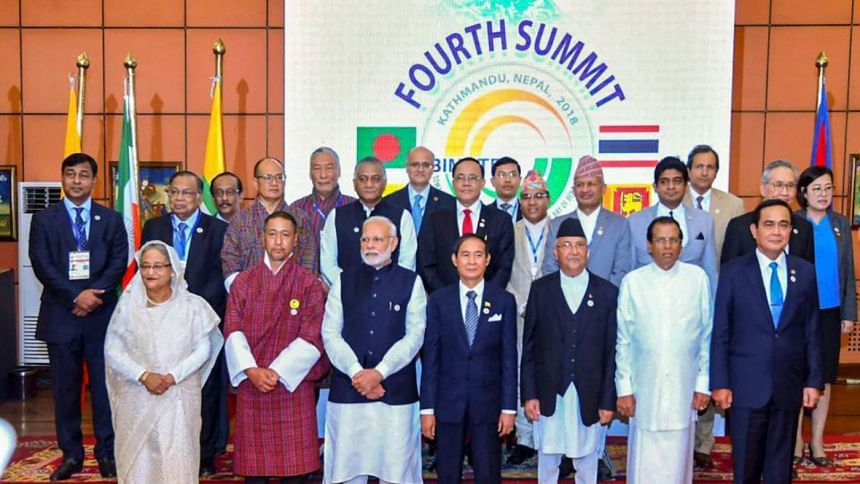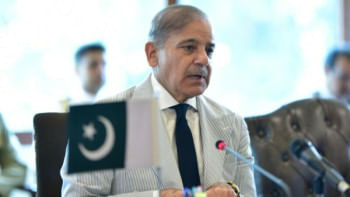BIMSTEC By Choice: The Road Ahead

When Bangladesh President Abdul Hamid and leaders of six other BIMSTEC (Bay of Bengal Initiative for Multi-Sectoral Technical and Economic Cooperation) countries attended Indian Prime Minister Narendra Modi's swearing-in ceremony in New Delhi, on May 30, it once again brought the focus back on a regional grouping whose geography ranges from the Himalayas to the Bay of Bengal. The Indian external affairs ministry may have termed the invite to the BIMSTEC leaders as being in sync with its "neighbourhood first" policy. But more importantly, it reiterated the powerful message that New Delhi is the fulcrum of the seven-nation grouping that acts as a bridge between South Asia and South East Asia.
The buzz about BIMSTEC was amplified by two more events that closely followed Modi's oath-taking. First, new External Affairs Minister S Jaishankar, in his first public engagement at the Growth Net Summit of public policy group Ananta Aspen Centre on June 6, talked about BIMSTEC as the centrepiece of New Delhi's "neighbourhood first" approach. Second, the very next day, he embarked on a trip to Bhutan, his first since becoming the minister. Third, Modi undertook his first official visit abroad by travelling to the Maldives and Sri Lanka. Bhutan and Sri Lanka are members of BIMSTEC.
This was the second gathering of BIMSTEC leaders in India in less than three years, the previous one having been organised in Goa in October 2016, a month after the cancellation of the SAARC Summit that was to be held in Pakistan in the wake of the terror attack on an Indian army camp in Uri, Jammu and Kashmir. The attack had left 19 troops dead. After Goa, the fourth BIMSTEC Summit was held in Kathmandu in August 2018. There is one common signal running through the three events between Goa and Modi's oath-taking—that regional cooperation in South Asia and BIMSTEC, five of whose seven members make up the SAARC, is moving smoothly, albeit slowly, without Pakistan.
The Goa gathering of BIMSTEC leaders, including Prime Minister Sheikh Hasina, came just a month after the Uri attack by Pakistan-based terror group Jaish-e-Mohammed, leading to the cancellation of the SAARC Summit in Islamabad in November that year as India and some other member-countries, including Bangladesh, boycotted it. But the rumblings about the shape of things to come were available two years ago at the SAARC Summit in Kathmandu. In his speech at the Summit, Modi had said that "opportunities must be realised through the SAARC or outside it" and "among us all or among some of us." In short, he cautioned against the risk of the SAARC being felled by the obstructionist approach of Pakistan and the regional association falling by the wayside.
The Kathmandu Summit unanimously agreed on two key initiatives—motor vehicles agreement and cross-border trade in electricity. However, Pakistan played the spoilsport and refused to sign in. Even then, India had not given all hope. Modi himself undertook a significant outreach when he, on his return from a visit to Afghanistan in December 2015, made a surprise stop-over in Lahore to greet the then Pakistan Prime Minister Nawaz Sharif on his birthday. But in less than a year came the terror attacks on the Indian Air Force base in Pathankot and the Uri incident, which together hammered what now seems the final nail in the SAARC's coffin, prompting India to look for an alternative in the BIMSTEC and give it a big push.
A significant portion of Modi's "neighbourhood first" policy in his first five-year term as prime minister tended to come unstuck as Pakistan continued on its path of cross-border terror, India-Nepal ties came under strain over the issue of "economic blockade", and the Abdulla Yameen government in the Maldives took a pronounced anti-India stand.
India's stable relations with Bhutan and a remarkable upswing in its ties with Bangladesh and Afghanistan were the brightest spots in India's "neighbourhood first" narrative. Of course, ties with Nepal, too, were back on track in 2017-18. Barring Pakistan, India's relations with all other South Asian countries now look much brighter, spiced up by the exit of the Yameen regime and installation of the Mohamed Solih government in the Maldives, which, Indian media reports say, could be the destination for Modi's first foreign visit in his second term. The Maldives was the only South Asian country he had not visited in his first stint as PM.
By inviting the leaders of BIMSTEC to his swearing-in ceremony, Modi has increased the stakes in the success of the future of the grouping, which had struggled to move forward in its 19-year-old history since its inception in 1997 till the Goa outreach summit in 2016. The BIMSTEC Summit in 2018 identified counter-terrorism, a development fund, connectivity, mountain economy and blue economy as thrust areas of cooperation, apart from a large range of 23 sectors already existing.
Some commentators have wondered if the present focus on BIMSTEC is by default due to the total deadlock in the SAARC process caused by the stalemate in India-Pakistan relations. They have also wondered if—and this is a very big "if"—there is a perceptible improvement in ties between New Delhi and Islamabad, does it mean that the SAARC would return as the more favoured vehicle for regional cooperation and the BIMSTEC would again fall into disuse? The two regional groupings are stand-alone entities. There is space for both even though many of their areas of cooperation overlap.
The prospects of the SAARC appear doomed unless Pakistan changes its attitude towards regional projects. Progress in the South Asian Free Trade Area Agreement, cleared in 2006, has remained stunted due to Pakistan's reservations. BIMSTEC and SAARC should not be seen as in competition with but rather as complementary to each other. BIMSTEC has its own raison-d'etre. It should be a mechanism of regional cooperation by choice, irrespective of the existence or collapse of the SAARC.
India has to be the livewire of BIMSTEC and ensure the success of the grouping after an almost listless two decades of its existence in terms of tangible achievements. The entire template of ties and achievements among BIMSTEC countries has so far taken place at bilateral levels and there is hardly anything to show for at the regional level. This narrative has to change and the primary responsibility is on India. S Jaishankar hinted at this when he said that India should pursue a "liberal" policy for BIMSTEC cooperation by taking steps to help other member-countries without insisting on reciprocity.
Constantino Xavier, a fellow at the Brookings India think-tank based in New Delhi, writing in an article, identifies two key ingredients of India's approach to BIMSTEC: 1) to expand its capacity to implement the projects jointly agreed on, and 2) to open up its economy to other member-countries. BIMSTEC countries are willing to plug into the rising Indian economy and derive benefits from it but have run into tariff and non-tariff barriers and a slow bureaucracy of India. Allowing greater market access to other BIMSTEC countries will no doubt hurt Indian domestic industries in certain areas, but the challenge for the Indian leadership is to resist that pressure, manage domestic grievances, and stay the course on opening its economy to neighbouring countries.
Pallab Bhattacharya is a special correspondent for The Daily Star.

 For all latest news, follow The Daily Star's Google News channel.
For all latest news, follow The Daily Star's Google News channel. 



Comments